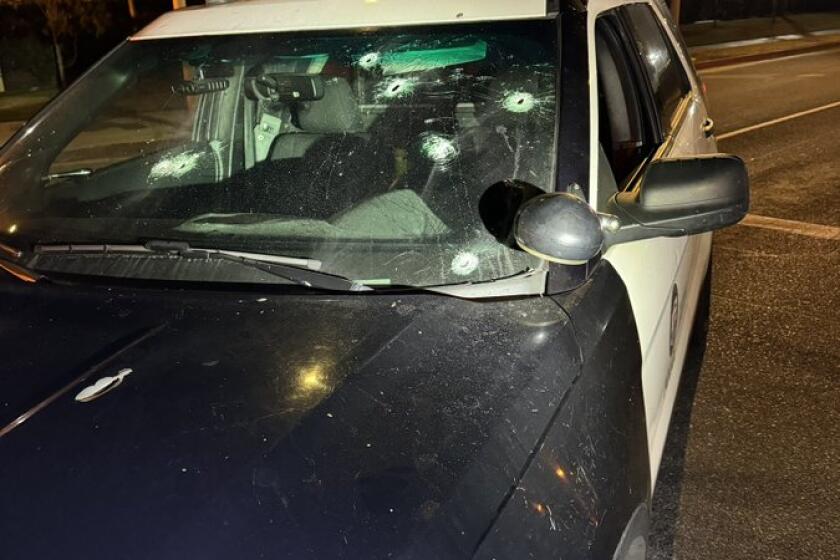‘Exceptionally dangerous situation:’ Historic California heat wave putting millions at risk

Officials are raising alarms about an extreme, long-duration heat wave that poses serious health and wildfire risks. Already, California has had several new wildfires force evacuations.
The basics
- The heat wave will last through at least Tuesday of next week with triple-digit temperatures expected for much of Northern and Central California. In some areas of the Central Valley, excessive heat is expected to last through July 11, according to the National Weather Service.
- Death Valley could hit 129 degrees on Sunday, which is expected to be the national park’s hottest day.
- In most of interior Northern California, temperatures are forecast to remain above 100 degrees through Tuesday.
- Southern California will also suffer, with excessive-heat warnings issued for inland valleys, deserts and mountains through Monday. Inland coastal areas away from the beach won’t be quite as extreme but will still be under a heat advisory, with highs from 85 to 95 degrees.
- Southern California’s peak temperatures are expected Thursday through Saturday, when deserts could top 110 degrees; mountains 100 to 112 degrees; valleys 98 to 108 and coastal plains 80 to 94.
Many parts of the Central Valley are forecast to see five to seven days — or more — of highs over 110 degrees and nighttime temperatures that remain above 70 or 80, conditions that give the human body almost no opportunity to recover.
California’s longest heat wave of the year, bringing triple-digit temperatures, fire danger and air quality concerns, is expected to arrive Tuesday.
Heat warnings
The National Weather Service is warning about severe health risks from the heat wave.
“An exceptionally dangerous situation is expected to unfold over the next week as we enter a potentially historic and deadly heat event,” the National Weather Service’s Bay Area office wrote in its excessive-heat warning. “Several days of temperatures well above normal will lead to compounding effects among people and infrastructure, with the possibility of numerous heat-related fatalities. ... An event of this scale, magnitude and longevity will likely rival anything we’ve seen in the last 18 years.”
In the Central Valley, the weather service warned that “this level of rare, long-duration extreme heat with little to no overnight relief affects everyone, especially those without effective cooling and/or adequate hydration.”
Record-breaking and dangerous heat is not only hitting California and the West this Fourth of July week, but also broiling the southern Plains and Mid-Atlantic, with 110 million people in 21 states under a heat advisory, watch or warning, the National Weather Service’s Weather Prediction Center said in a Wednesday morning forecast.
“Dozens of record highs are possible, expressing the rarity of this early-July heat wave,” the forecast said. “The duration of this heat is also concerning as scorching above-average temperatures are forecast to linger into next week.”
As California braces for a heat wave expected to last through next week, several wildfires have ignited under critical fire conditions, forcing evacuations.
Analysis
Daniel Swain, a UCLA climate scientist, called it “essentially inevitable” that wildfires would continue to start and grow during the heat wave — which began to play out Tuesday as temperatures climbed. The heat, low humidity, dry vegetation and winds in parts of Northern California on Tuesday and Wednesday prompted a red flag warning from the National Weather Service for much of the area, an alert for extreme fire weather. Swain also mentioned that the expected uptick in fireworks and firecrackers during the holiday weekend would only exacerbate the situation.
“It’s a pretty bad combination, honestly, to have a potentially record-breaking heat wave that starts off with dry north winds,” Swain said in a briefing Monday. “Buckle up: I think California’s fire season is likely to escalate considerably over the next five to seven days.”
Several fires have already started, including one in Oroville that destroyed several buildings Tuesday.
Extreme heat has become the most deadly weather-related event in California and the rest of the nation as climate change has made heat waves more intense, longer and frequent. Weather officials are urging people to take this week’s conditions seriously.
“This is a prolonged heat event that will definitely bring serious concerns for heat-related illnesses if people don’t take proper precautions,” said Kate Forrest, a National Weather Service meteorologist in Sacramento.
“Essentially all heat waves have a detectable human fingerprint at this point,” Swain said. “In a warming climate, heat waves become more frequent and more intense virtually everywhere on Earth, so extreme heat events — like the one that California is about to experience — have been made worse and more likely by climate change.”
Tips
Stay indoors, use A.C. and wear light clothing
- Officials from the National Weather Service and public health offices advise people to stay indoors as much as possible, particularly between 10 a.m. and 3 p.m. when the sun is strongest. If you exercise outdoors, it’s recommended to do so early in the morning or later in the evening.
- If you don’t have air conditioning, the Centers for Disease Control and Prevention recommends going to a mall or public library. You can also refer to your county’s website or call the local health department to learn about cooling centers in your area. Other options include taking a cool shower twice a day or even finding a shaded yard or park. (Health officials at UCLA say electric fans will not prevent heat-related illnesses when temperatures reach the high 90s and above.)
- What you wear also matters. Officials suggest light-colored, lightweight, loose-fitting clothes when you are outdoors, along with a wide-brimmed hat. Be sure to use sunscreen with a protection factor of at least 15 and apply it about 30 minutes before going outside.
Watch out for heat-related illnesses
- According to the CDC, heat-related illnesses can range from heat rash and sunburn to more serious conditions including heat exhaustion and heatstroke, which result from the body’s inability to cool down by sweating. Signs of heatstroke, the most serious of the heat-related illnesses, include a temperature of 103 degrees or higher; hot, red, dry or damp skin; fast, strong pulse; headache; dizziness; nausea; confusion and losing consciousness. If you’re experiencing these symptoms, seek immediate medical attention.
- If this point is reached, the CDC advises against drinking anything and recommends moving to a cool place and into a cold bath, if possible.
Stay hydrated
- Drinking plenty of fluids, particularly before going outdoors, is critical in preventing heat-related illnesses. Officials at UCLA warn against waiting until you’re thirsty to drink.
- During times of extreme heat, it’s best to drink at least two to four cups of water per hour. (For those working outside, the CDC suggests one cup of water, or 8 ounces, every 15–20 minutes.) Health officials also advise against drinking alcohol during times of extreme heat, as it causes dehydration and increases the risk of heat-related illnesses. It’s also important to replenish the salt and minerals your body loses when it sweats by drinking low-sugar fruit juices or sports drinks. Dietitians also recommend eating foods with high water content — think watermelon, celery and cucumbers.
Check up on the most vulnerable
- In addition to keeping yourself safe and healthy, check in frequently with those who are at high risk, including seniors, children, pregnant women, the unhoused, those who work outside and those without air conditioning. Heat also affects your pets, so keep them indoors or if they will be outside, make sure they have plenty of water and a shaded area to help them keep cool.
- Never leave a child or pet in the back seat of a car, as temperatures inside a vehicle can quickly skyrocket, even with windows cracked.
More to Read
Start your day right
Sign up for Essential California for news, features and recommendations from the L.A. Times and beyond in your inbox six days a week.
You may occasionally receive promotional content from the Los Angeles Times.









